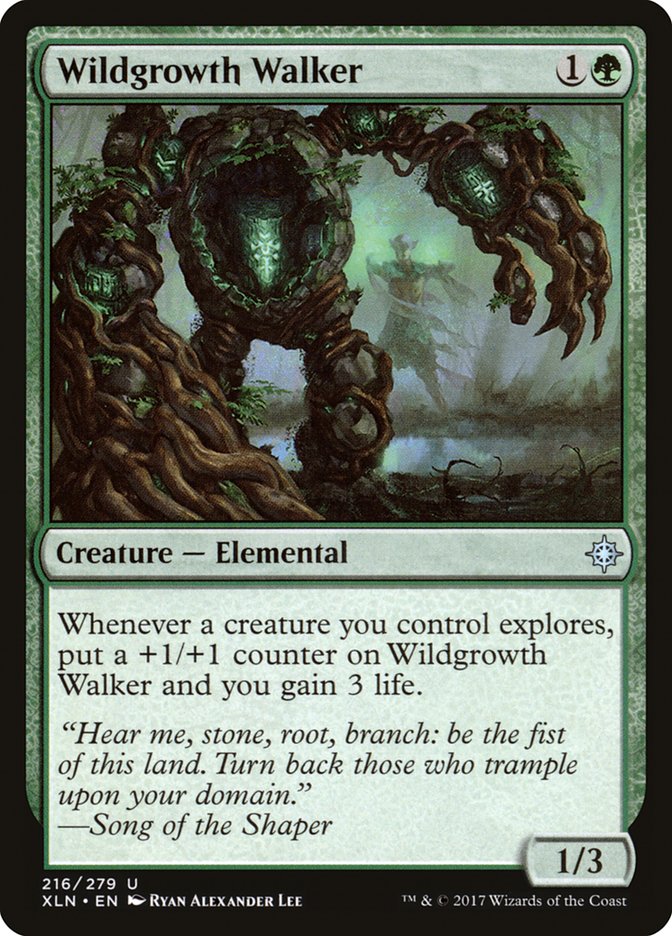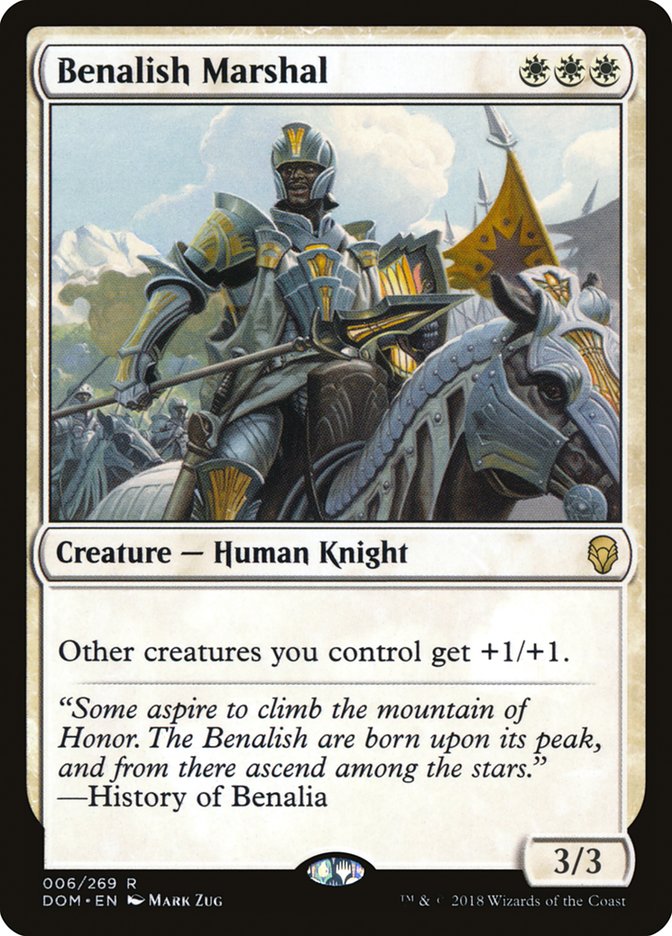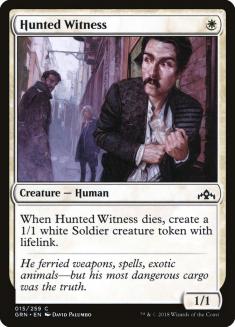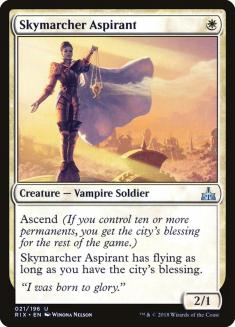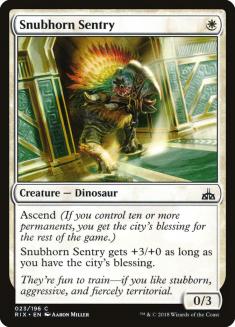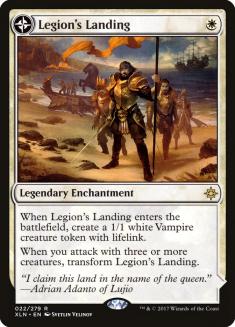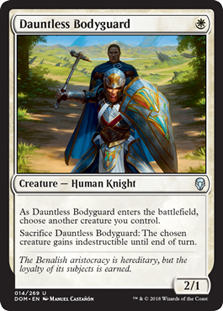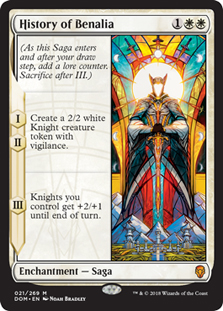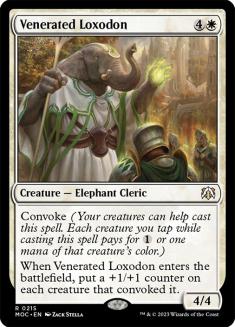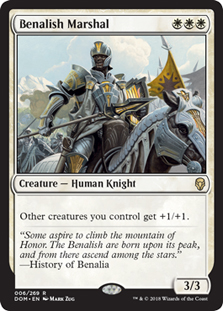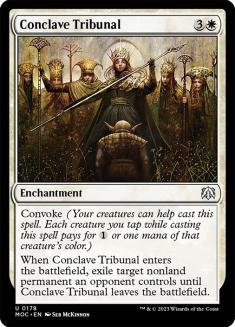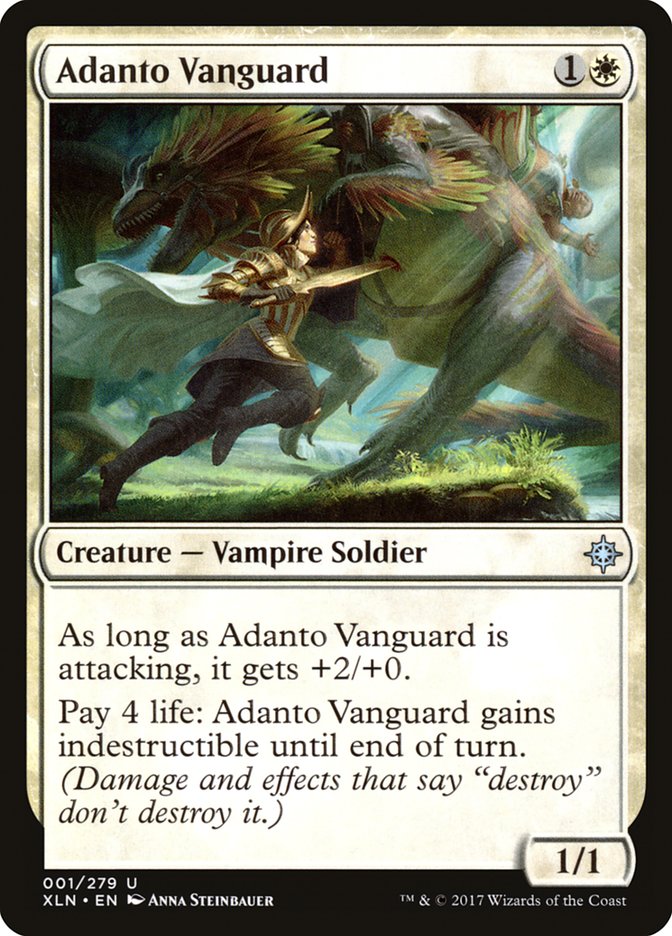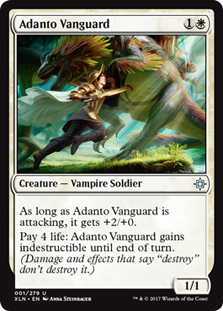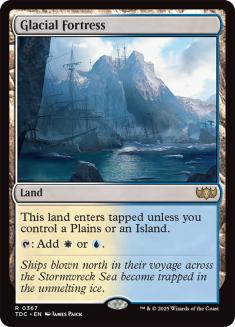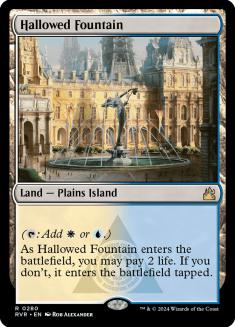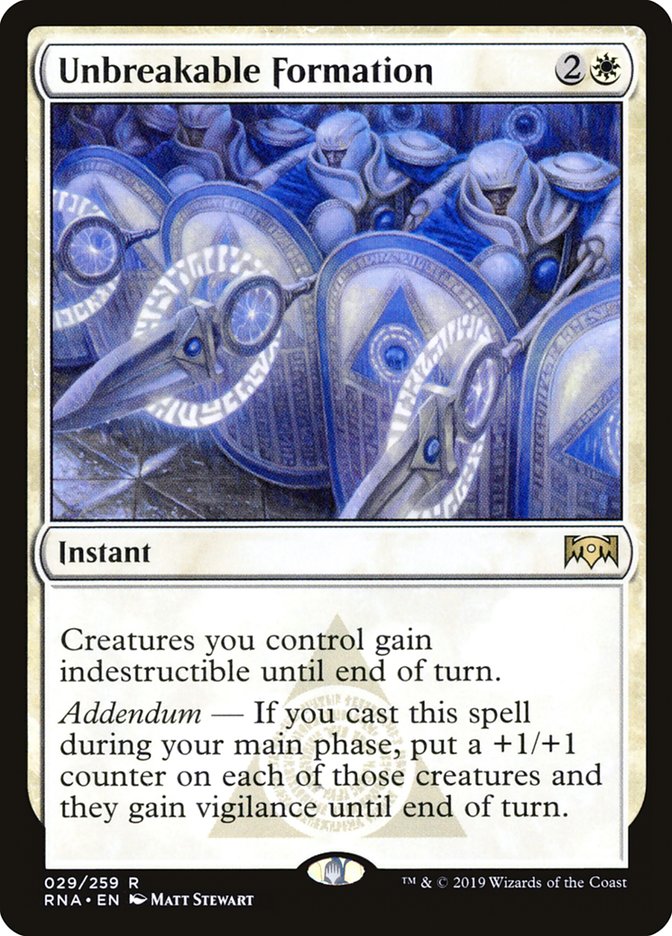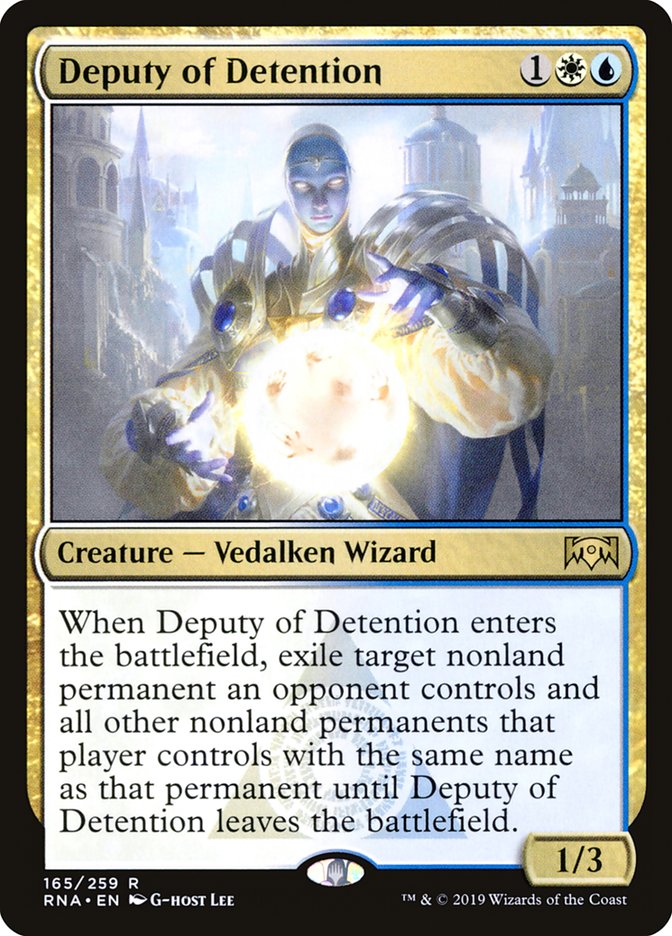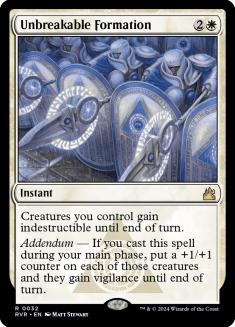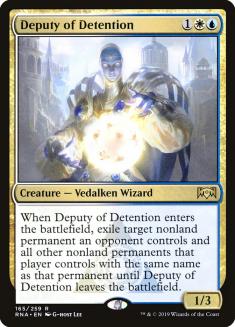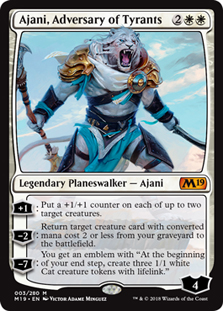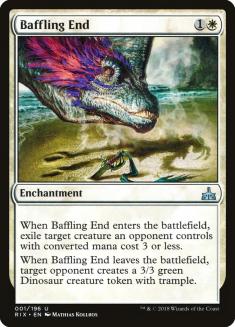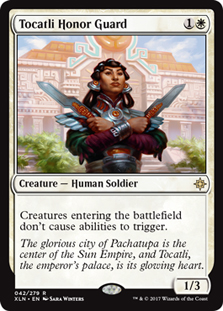Guilds of Ravnica Standard was defined by three decks: Jeskai Control, Golgari Midrange, and Boros Aggro. When Ravnica Allegiance entered the format, the public consensus was that the metagame had radically changed. Decks based around Nexus of Fate and Judith, the Scourge Diva seemed poised for success and Light Up the Stage made Mono-Red Aggro seem like a far more legitimate threat. Slowly but surely, people realized that while the one-mana Divination is excellent, Mono-Red’s average card power level was still far too low to make it a Tier 1 deck. The hivemind also concluded that the various Wilderness Reclamation decks have virtually no favorable matchups after sideboarding, even though their Game 1 plan is relatively difficult to attack. With the aforementioned Judith decks almost completely failing to materialize, Standard landed in this state.
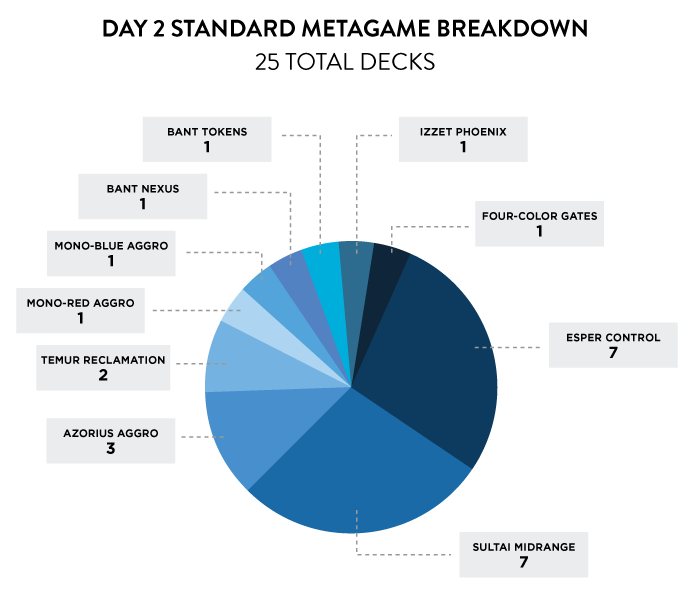
As you can see, the metagame is again defined by three decks: a Teferi, Hero of Dominaria control deck; a Wildgrowth Walker midrange deck; and a Benalish Marshal aggro deck. While the control deck swapped out red for black and the white aggro deck changed its splash color, Standard bears a remarkable resemblance to its pre-Ravnica Allegiance state and I don’t think it would be crazy to take any of these three decks to your next Standard tournament. The results of the tournament, however, also make a clear claim about which of these decks performed the best. The three teams running Azorius Aggro in their Standard seat finished in first, ninth, and eleventh place. While we do not know their individual records and these three teams are all composed of strong players, that’s still an incredibly impressive result.
When examining this metagame breakdown, you’ll notice that these three teams also played incredibly similar lists in the Standard seat. This isn’t a coincidence, as all three of them reached out to me prior to the event to discuss the deck. This article contains all the information I discussed with them and more as I explain how I’d build Azorius Aggro for today’s Standard format.
The One-Drops
This deck wants as many one-drops as it can get to maximize the value of its convoke spells and mass pump effects. After playing a huge number of games in both last Standard and this Standard, I believe that eighteen one-drops is the right number to have in the maindeck. In sideboard games, it generally benefits you to become less linear and all-in to dodge opposing interaction, which generally means removing one-drops. The minimum number of one-drops that still allow the deck to function is fourteen and I often sideboard down to precisely that number.
The mix of one-drops is essentially determined by the following set of facts:
- Every list starts with playsets of Snubhorn Sentry, Legion’s Landing, and Dauntless Bodyguard.
- Hunted Witness’s sticky body is great against Esper Control and Mono-Red Aggro. However, it usually struggles to attack against green decks.
- Healer’s Hawk is amazing in the mirror, where it will never be killed and dramatically swings races and flying makes it pretty good against Sultai Midrange. However, it’s awful against Esper Control and the various Gates decks as it both clocks them slowly and provides no insulation against Kaya’s Wrath.
- Skymarcher Aspirant is very bad against Goblin Chainwhirler, but great against Sultai Midrange where the flying is often extremely relevant. It’s medium against Esper Control and Gates, where it’s fast but flimsy.
- Having Dauntless Bodyguard in the deck means that while some sticky creatures are valuable, they can become redundant, limiting their usefulness.
On Week 1 of the format, friend of the show Max Magnuson chose to play a build of Azorius Aggro with no Skymarcher Aspirant and additional Hunted Witnesses because he expected a huge amount of Mono-Red Aggro. While I think this was reasonable at the time, I now expect Mono-Red to be present but not popular. In addition, Esper Control is currently much more popular than Azorius Aggro, which means Skymarcher Aspirant gets the nod over Healer’s Hawk.
Thus, we settle on these eighteen one-drops:
The Payoffs
Azorius Aggro is fundamentally a go-wide strategy, so leaving home without the full playset of Venerated Loxodon, Benalish Marshal, or History of Benalia is crazy. However, there’s a third payoff of sorts in the form of Conclave Tribunal. While Tribunal is fundamentally an interactive card, its Convoke ability creates broken turns that dramatically swing the game state, assuming you have a critical density of one-drops. Tribunal is a necessity against Sultai Midrange to answer Wildgrowth Walker Game 1, but it’s very bad against Esper Control. Thankfully, it’s serviceable against the rest of the field, so I like the full playset for now, but if Esper Control gains in popularity, I can imagine moving down to two or three copies of this card in the maindeck.
So, we have these sixteen payoffs:
The Two-Drops
In this spot on the curve, precisely two options exist – Adanto Vanguard and Tithe Taker. Adanto Vanguard is far better against Sultai because it’s impossible to block profitably, and slightly better against Esper Control. But it’s one of the first cards you sideboard out against all aggressive decks; in those matchups, the life payments become punishing very quickly and the card is not far from being a vanilla 3/1. In addition, multiple Adanto Vanguards tend to be awkward, even in matchups like Sultai where your life total isn’t under the same threat. Tithe Taker is serviceable in every matchup and shines specifically against troublesome instants like Settle the Wreckage and Root Snare.
At this moment, Mono-Red is on the decline and Azorius Aggro isn’t very popular yet, while Sultai Midrange and Esper Control are the two most popular decks. Thus, I think it’s correct to play mostly Adanto Vanguard. However, every Adanto Vanguard you play forces you to have one more card in the sideboard for aggressive decks (typically Baffling End). While Baffling End is still better than Tithe Taker in most aggressive matchups, it’s a fairly small upgrade. I can find room in my sideboard for enough anti-aggressive cards that I currently prefer the full four copies of Vanguard. However, depending on the specifics of your list, I can easily see a split making sense.
Two-drops:
The Manabase
Azorius Aggro primarily plans to keep its spell density high by using Legion’s Landing and Convoke spells to cheat on lands. The deck therefore only needs twenty mana sources that are actual lands, regardless of matchup. However, if your sideboard configuration regularly features five or more blue spells, the deck needs to add one more blue source without cutting any of the untapped white sources. My current configuration avoids that as much as possible, and therefore forgoes the Island, but it’s something to keep in mind when adjusting these numbers.
Lands:
The Flex Slots
Last season, almost every Boros Aggro deck included two copies of Pride of the Conquerors, which served as a trump in the mirror and helped make the deck as linear as possible in Game 1. It did so by ensuring the deck had just enough high-impact cards to be functional in Game 1, but it was frequently sideboarded out. In the new format, Pride has lost a lot of ground because it’s so utterly terrible against Bant Nexus. As a result, I think there are two close options for these slots:
Unbreakable Formation is the new Pride of the Conquerors. It enables a massive attack step and leaves a permanent bonus, making it far more palatable against Bant Nexus. In addition, giving your team Vigilance has incredible synergy with your Convoke spells, making the card effectively cost zero mana much of the time. Combined with Venerated Loxodon, it can even allow you to push creatures out of range of Find // Finality, which is often the difference between winning and losing against Sultai.
Against red decks, is can help push your creatures out of range of Goblin Chainwhirler and it even serves as a clunky answer to the fearsome Kaya’s Wrath in Game 1 against Esper Control. The card remains a trump in the mirror while getting sideboarded out in the vast majority of other matchups, but it’s substantially better than Pride would be in the most Game 1s.
Deputy of Detention, on the other hand, attacks the format in a very different way than Unbreakable Formation. It’s good against Sultai’s Wildgrowth Walker plan, but actively bad against their Find // Finality plan: overall, both cards are comparably good there. Both are also incredible in the mirror, as Knight tokens don’t come back from detention. Deputy is much worse than Formation against Mono-Red and slightly worse against Esper Control, but it shines against Bant Nexus, given their plethora of important enchantments, and Esper Midrange, since all their creatures are must-kill threats. At present, I think Esper Control and Mono-Red are more popular than Bant Nexus and Esper Midrange, so I prefer Formation, although this could easily go the other way in the future.
Maindeck flex slots:
Sideboard flex slot:
The Splash
Last season, every white aggro deck splashed red for Experimental Frenzy out of the sideboard. However, the shift from Jeskai to Esper Control means that an opposing control mage now incidentally has a pile of Mortifies in their deck, substantially reducing the value of the grindy enchantment. As a result, counterspells have become the most effective way to fight Esper Control. These are primarily for Kaya’s Wrath and Cry of the Carnarium but can incidentally hit many other targets. The countermagic is also good against Bant Nexus and the Gates deck, but I think it would be the best way to fight control regardless. Negate is the counterspell of choice here because Azorius Aggro has too few blue sources to have Spell Pierce up in the early game reliably.
Sideboard splash:
Putting the Pieces Together
Creatures (26)
- 4 Adanto Vanguard
- 4 Skymarcher Aspirant
- 4 Snubhorn Sentry
- 4 Benalish Marshal
- 4 Dauntless Bodyguard
- 4 Venerated Loxodon
- 2 Hunted Witness
Lands (20)
Spells (14)

VS. Sultai Midrange
Out:
In:
“Tocatli plus Ajani” beat Sultai Midrange last season and it will beat it this season too! Since the expensive finisher of choice is now Hydroid Krasis, Baffling End is a small upgrade to Conclave Tribunal. If your opponent is playing a list with many Incubation Druids, or you otherwise suspect they might not have Cry of the Carnarium in your sideboard, you should cut two copies of Snubhorn Sentry instead of the Dauntless Bodyguards. If they have many Cast Downs to answer Honor Guards, you should cut two copies of Skymarcher Aspirants instead of the Dauntless Bodyguards. I’m experimenting with a small number of Disdainful Strokes for this matchup, but as of now I’m still unsure whether that’s better than other options.
VS. Esper Control
Out:
In:
While it’s nice to not be cold to a Wrath Game 1, Unbreakable Formation is too clunky to remain in the deck after sideboarding. This matchup mostly revolves around mitigating the impact of Kaya’s Wrath as much as possible, while being aware that they will typically sideboard in must-answer threats like Hostage Taker and Lyra Dawnbringer. Thus, even though Tribunal is bad against them in Game 2, we need two or three post-sideboard.
VS. Mono-Red Aggro
Out (on the play):
In (on the play):
Out (on the draw):
In (on the draw):
This matchup is about two things – surviving Goblin Chainwhirler and winning the late-game through Experimental Frenzy. Tocatli Honor Guard and Unbreakable Formation provide the former while Ajani delivers the latter. If you can, hold your Tribunals for their Frenzies, but be aware that you won’t always have that luxury against the 3/3 first striking body of Goblin Chainwhirler.
VS. Mono-Blue Aggro
Out:
In:
This is likely our best matchup. Once you get ahead on the battlefield, all their counterspells become bad and it’s extremely difficult to catch up. After sideboarding, Sleep is the main way that they steal games. Thus, try to force them to tap out and then use your removal to keep the battlefield small.
VS. Azorius Aggro
Out:
In:
This matchup hasn’t changed much since last season – don’t fill your deck with bad expensive cards, win the die roll, and out-draw your opponent. The only real change to be aware of is Deputy of Detention, which you should play around to whatever limited extent you are able.
VS. Bant Nexus
Out:
In:
This is the only major matchup where I cut any copies of Venerated Loxodon. Taking a turn off from attacking to pump your team is incredibly awkward when it plays right into their copies of Root Snare and Settle the Wreckage. Try to suss out whether their limiting factor is cards or mana. Then, use your enchantment removal on Wilderness Reclamation if they’re mana-limited and Search for Azcanta or Teferi if they’re card-limited. In my experience, this matchup is quite favorable. A fast clock plus disruption beats a combo deck every time.
The Best Deck in Standard?
As of right now, the title of the best deck in Standard is still up for grabs. Azorius Aggro had an amazing performance last weekend, but Sultai Midrange and Esper Control have had a larger volume of results over a sustained period. However, I think one point is beyond debate – Mono-Red Aggro has had two disappointing showings in a row, leaving Azorius Aggro clearly the best aggressive deck in Standard. If you’re looking to attack in Standard, I highly recommend Elephants and Counterspells right now.
Four copies of Venerated Loxodon. Still the truth.



